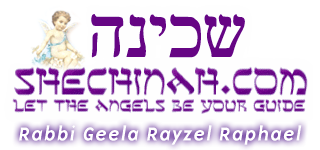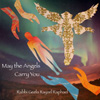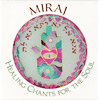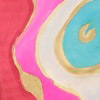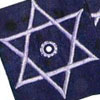Abortion Ritual
This paper was written when I was in the Reconstructionist Rabbinical School in the 1990s.
BACKGROUND:
For the past number of years, Roe v. Wade had insured the right of women to have an abortion. The Jewish feminist literature available has attempted to offer some prayers andceremony for a woman faced with the decision to abort. However, to our knowledge there has not been a thorough search of traditional Jewish sources to help create an abortion ritual. This paper will examine discuss and texts of Talmud, Mishnah, Midrash, and Codes in order to provide a base for a contemporary approach to an abortion ritual.
The first stage of this task was to locate the material. Our findings drew us to discussions on the ritual status of women after giving birth or miscarrying. Deliberate abortion is not addressed in the Codes literature. In order to piece together the ritual elements surrounding a deliberate abortion we first examined the rituals pertaining to birth and spontaneous abortion. The ancient Hebrew women's ritual associated with birth and miscarriage related issues, deals with a period of separation which ends with bringing a sacrifice to the Temple.
SEPARATION AND MARKING TIME:
As we learn from Leviticus 22, when a woman has given birth she is ritually separated from engaging sexually with her man and from participating in the Temple cult, the same restrictions that apply to a menstruant, a niddah. For a boy-child the mother's ritual separation is one week, for a girl child her ritual separation is two weeks.
At the end of this period, the woman is in the unique category of being ritually separated from the Temple but not ritually separated from her man, even when she continues to bleed. In all other cases a show of blood would ritually separate her from him. This second period is 33 days for a newborn boy and 66 days for a newborn girl.
Adding the two periods together, the yoledet is ritually separated from the Temple and the cult for 40 days if she gives birth to a boy, and for 80 days if she gives birth to a girl. If a woman miscarries within the first forty days of her pregnancy, (less than 6 weeks) she is considered simply as niddah. She separates from her man and the Temple cult, and when the blood flow ends, rejoins both her man and the cult. If however, she miscarries on the forty-first day of pregnancy or beyond, she is ritually considered an yoledet, and although she has no child and hasn't even carried to term, all the restrictions and obligations of the yoledet apply to her.
There is a third category of ritual separation for women from both men and the cult, and thisis the Zov, which is any (bloody) vaginal discharge which is neither menstruation nor afterbirth. For reasons that are probably very interesting, but go in a different direction than our topic, (Tur: Yoreh Deah, Section 194) the categories of the ritual separation of the menstruant, of the yoledet, and of the zova are now all considered to be in the category of the zava so that under all conditions the woman remains in a state of Tumah as long as there is blood flow, and she may not rejoin the Temple cult or her man until seven days pass during which there is no sign of blood. After the seventh clean day the women immerses in a mikveh, a ritual bath, and emerges ritually accessible to both her man and the Temple cult.
SACRIFICE:
In ancient times, at the end of the period of separation, the mother would bring two sacrifices to the Temple, an animal or a bird for a burnt offering-and a bird for a "hattat ", an expiation offering. She is then permitted to rejoin the community of those who may participate in the Temple cult.
The bird as an expiation offering (hattat) is the prescribed sacrifice for the yoledet, among others who are also ritually separated from the Temple. (These others include the Zav and Zava, a healed leper who is poor, and a Nazarite who has come in contact with tumah.) By offering the sacrifice at the appropriate time these people move to a state of tohara wherein they may partake of sacrificial foods again.
A Hattat is often translated as a sin offering, for a hattat must also be brought by a person who has inadvertently committed a sin punishable by Karet. Is there some suggestion when, of sin being cast upon the yoledet and these other ritual states of being? The midrash in B'reshit Rabbah (XX.7 ) teaches: When a woman sits on the birthstool she declares, "I will never fulfill my marital duties again!" The Holy One says "you will return to your desire, to your husband." R. Brachia and R. Shimon said in the name of R. Shimon bar Yohai,"because she fluttered in her heart, she must bring a fluttering sacrifice." i.e. the bird. Masechet Nidda 31b \describes a similar scenario and claiming that the woman requires expiation for swearing to abstain from sexual relations, and then for retracting her words. But this accusation is refuted on the grounds that this bird sacrifice has nothing at all to do with sinful actions on the part of the woman.
It seems then that the expiation brought about through the offered bird is expiation only for being in a state of ritual separateness. In the ancient world of Temple worship there was an an objective and palpable difference between the states of tumah and taharah. The expiation rites were not merely symbolic, rather the actual tumah was being physically transferred from the woman to the pigeon to the altar. The offerers placed their hands upon the sacrifice to identify themselves with the sacrifice. The tumah was finally removed or transformed from the altar by the sprinkling of the blood, the burning of the sacrifice and the washing of the altar.
Once the yoledet brings her sacrifice she is fit to partake of the ritual foods of the Temple. The essence of the ritual of the bird sacrifice is the woman's re-entry into full membership of the Temple cult. In Quinnin 3:6, there is a cryptic reference to how a sacrifice works. "When an animal is alive it has one voice, when it is dead it has seven. How does it have seven when it is dead? The two horns become two trumpets, the two leg bones become a flute, the hide is used to make a drum, the innards for a lyre, the intestines for a harp, and even the wool is made into blue thread for weaving the pomegranates on the high priests garments." In other words, the by sacrificing this animal it is transformed into other forms. The imagery is lovely, - musical instruments, items which obviously bring pleasure and delight to the world. Items which can be used to bring forth sound pleasing to the heavens. This is what we hope to accomplish with this ritual as well. With the release of negative emotions we hope to bring forth a new vision, new energy, new direction for the mother (and perhaps her partner) who has had to make this decision to abort.
COMING TO TERMS WITH ABORTION THROUGH RITUAL:
Burial:
In creating a ritual for the abortion, we begin with the burial. We are suggesting that this part of the ritual, if the fetus has been rescued from the hospital/clinic, take place in sacred ground, a woods, family property, etc. Burial of the fetus should occur as quickly as possible (Rambam Hilchot Avel 4:7) after the abortion with only a few friends present. There should be no formal words spoken, silence is preferable. (Rambam Hilchot Avel 1:6)
Mikveh:
While the woman still bleeds from the abortion, she abstains from sexual relations and focuses on her own body's healing as a full and separate person. After the bleeding ceases, the woman counts seven clean days past her blood flow . At the end of this period she goes to the mikveh with a friend.
This is a whole ritual in and of itself which can be further developed. This is a private stage of the ritual between the woman and herself, and perhaps her and partner. The mikveh moves her from one state to another while immersing in the amniotic fluids of the earth. We suggest the woman focus on nurturing imagery of G-d and living waters. The women, and her friends, should direct their hearts and kavvanot to appropriate, healing prayers.
The Public Ritual, Transformation via Sacrifice:
In creating this public portion of the ritual, we were/are operating under the assumption that choosing an abortion is not an easy decision and in some cases could possibly be tortuous. The woman could be laden with guilt, ambivalence, fear of doing the wrong thing., etc. This mindset is the background to our ritual, and by choosing to acknowledge the action consciously, the woman may be comforted and able to express any negative feelings.
In constructing this ritual, in addition to the time element, we also examined what would be the elements, symbols needed by the woman as she created a ceremony. We would suggest that the woman invite a few close friends, perhaps only her partner, but that a minyon not be present. We felt that the incomplete number would serve to remind us that abortion was also something that wasn't completed and didn't warrant ratification by a full community as defined by Jewish law. This fetus should not be
Setting Up the Ritual:
In examining the ritual act of sacrifice we also found that a red line went around the altar determining which sacrifices were sprinkled on the upper part of the altar and which were sprinkled on the lower half of the altar. This delineation depended on what type of sacrifice would be offered. Therefore we suggest that the woman mark off a space with a red thread, or red scarf, whether she is outside, or inside her house. This will serve as sacred space for her altar.
Upon the altar she places several items. In keeping with the symbolism of the actual sacrifices, she will have some sort of flame (or candle to be lit), salt water, bread and incense. These will represent the elements of fire, water, earth, and air -items necessary to awaken the senses for ritual. At the Beit Ha-migdash, fire was used to burn the offering, water was used to wash the altar, incense was used to purify the air, and the shewbreads were on hand as permanent offerings. All of these ingredients were necessary for the transformative process to occur, the removal of sins to a purified state. As well, all the ritual objects within the Temple had a specific position. Priestly movements were choreographed in relation to the North, South, East, and West. We are assuming that these directions were an important factor.
We suggest the woman bring some personal item that will be "sacrificed" as part of this ritual. This could be red flowers, a card, a picture, a inexpensive piece of jewelry, a piece of baby's clothing...something to symbolize the hope that the new life would have brought. This should be something that will not be used in any way again. This is also placed upon the South west corner of the altar.
Other items which could be placed upon the altar, include coins which are mentioned in Temurah 4. They were thrown into the Yam Hamelech, signifying that they would not be retrieved or benefit anyone. A bird's feather, necessary to both Hattat ha-of and symbolizing the element of air is also necessary. There should also be some refreshments/food/bread on hand prepared by the guests. As representatives of the element earth, use foods that are considered bittersweet or sweet and sour (this could be bittersweet chocolate, watercress, sweet and sour sauce, horseradish and charoset or some other food that represents the dichotomies of life. ) No bread should be used, but rather food over which one can say "adamah."
Finally, a mixture which represents blood and semen, red and white, from the mother and father of this would-be life. Two substances would be available in two different containers. A third empty container is also on hand. Either actual blood and semen is used, or some other substitute like wine (or red juice) and milk.
Sacred ground is the preferred option to bury the symbolic sacrifice as a way of showing reverence to the potential for life, perhaps near the actual burial of the fetus if known. Mishnah Temurah 7:4 states: "These things are to be buried: sanctified animals which produce a miscarriage, the miscarriage as well as the afterbirth are to be buried." All the more so a woman's body and its "products" are to be considered holy and require burial. If sacred ground is not readily available or it is winter time, a pot of earth or plant should be on hand to represent the ground.
We are assuming that the abortion has taken place before the public part of this ritual, although this may be adapted according to needs of the individuals to occur before the abortion.
Text of the Public Ceremony:
The ceremony begins after the mother and her guest(s) are present.
The Rabbi/Leader begins with a slow niggun. (Suggestions As We Bless the Source of Life, Faith Rogow; Healing Song, Hannah Tiferet Siegel; etc) then speaks:
We are here today to acknowledge that an abortion has taken place and transform the pain that is associated with that decision. We recognize that this was not an easy process and we, as representatives of the Jewish people, are prepared to offer support to (Name of Mother or Couple). What lies before us is a symbolic replica of the altar in the Temple. There are four elements at the four corners, fire, water, incense, and bread. these represent the items that were actually used in the Temple for the worship service. Notice that the space here has been delineated with a red thread. Red is associated several times with women in the Tanach (Rahav, Tamar's birthing of twins, etc) There was also a line around the altar in the Beit
Hamigdash called Hut haseekrah to separate the upper and lower parts. This determined where the blood of sacrifices would be sprinkled.
Mother speaks: I come here today to commemorate a potential life and to affirm my decision to abort. This has not been an easy decision for the following reasons: (Mother elaborates)
Partner (if there is one) also speaks: I also come to commemorate a potential life and to support my partners (father says: and my own) decision to abort. This has not been an easy decision for the following reasons. (Partner elaborates)
Rabbi/Leader: We recognize your pain in this decision and are here to help you move through your complex emotions. We begin at the South East corner of the altar with the element of air represented by incense. We ask one of your friends to light the incense and to spread it around with this feather so that the smell permeates the space. This helps creates sacred space for us and purifies our auras. Participant take the incense and feather and waves it around the area and the others present and with the following Kavvanah :
"We ask that this space be purified and transformed to contain our ritual. We ask for healing of the body and souls of this woman and her partner (if there is one) and that the sweet smell of the incense remind them of the sweetness in life, even in the midst of travail.
We ask that the air be cleared of harmful energies and only Shechinah and her angels be allowed to enter this space as we say: Baruch At Yah Shechinah, Elohaynu Rechem Hayim, Boret Minay B'samim. (Blessed are You Shechinah, Womb of Life who creates the many spices.) “
Rabbi/Leader: We now ask you (the woman) to make a sacrificial offering to be burnt. We begin with the Southwest corner of the altar for this was the area in the Temple that sin and burnt offerings were sprinkled. (Zevachim 6:2) Please take our offering from the South West corner.
Woman takes the object she has brought to be "sacrificed" and lays her hands upon it (and her partners) She then burns it with the following Kavannah:
Any of my/our guilt/negativity which we may or may not be aware of is transferred to this object and with its burning , I/we release any sense of wrongdoing that I/we may have felt around this decision." The object is burned in silence.
The Rabbi/Leader speaks: "We will now say officially say good-bye to the soul that will not be joining us. According to Mishnah Zevachim 5:1, the Northern Corner of the altar was reserved for the most holy things. At the North West corner, S/He then takes the blood and semen (or milk and beet juice) and mixes them together For the reasons that have been articulated, it was not the proper time for a new being to come into existence."
The woman takes the "blood" (wine) and her and partner the "milk" and pours it into the third bowl and say: "We have mixed out bodily fluids together, but we would like to nullify that decision now. " This is then poured on the ground, or in the burial hole, with the following kavannah:
"With this mixture representing flesh and blood, bone and muscle, the joined partnership of our being- we now release our hopes and dreams that were activated by this pregnancy. We return them to the earth to be as the soul will be recycled in the heavens." The mixture is then poured out in silence, slowly.
If appropriate they could say together: May our future sexual relations be fruitful in a way that is a blessing to us.
Rabbi/Leader: We now ask you to place the coins in the salt water in the North East corner with the following kavannah:
"These coins I throw into the sea, for they will have no use for me. My tears, as represented by the salt water, wash away my pain, and I am ready to move into a state of affirming my life. on from this difficult place. The water cleanses and purifies me and move me into a place of resolution with this decision. " (If water is nearby and mikveh is also taken at this point)
Rabbi/Leader: "Finally we are ready to affirm life as it will now be." Mother (and partner) share why this has been a good decision.
Rabbi: Your friends have prepared food at the South East corner of the altar. We have come full circle and we are ready to begin a new cycle.
The food is served to the woman and her partner with the following kavvanah:
All attending friends say together: "With this food we help you affirm your life. By nourishing you in this difficult time we let you know that we are here as support. We acknowledge that you made the best decision for your life at this time and honor your right to do so. We stand by you in times of hard decisions are are here to help you as representatives of the community of Israel. As Jewish women through the centuries have had to make hard decisions and sacrifice, we remind you of our chain of tradition. We urge you to find strength in it. We offer these foods to remind you that life- although at times bitter, salty, or sour- is also a mixture of sweetness. We appreciate the various tastes available to us from G-d's universe and know that we would be deprived if all tasted only sweet. We offer these to you for a symbolic tasting and nourishment of all that life has to offer.
All say: In the womb of the Great Mother we will bury and be buried. From this same ground we are nourished and comforted. Brucha Yah Shechinah, Mikor Hachayim, Borey p'ri Ha'adamah.
Rabbi/Leader: Our ritual is now complete, we now adjourn for a meal.
Rabbi Geela Rayzel Raphael and Friends 1992
For more information, email me at

or call 215-237-2955
